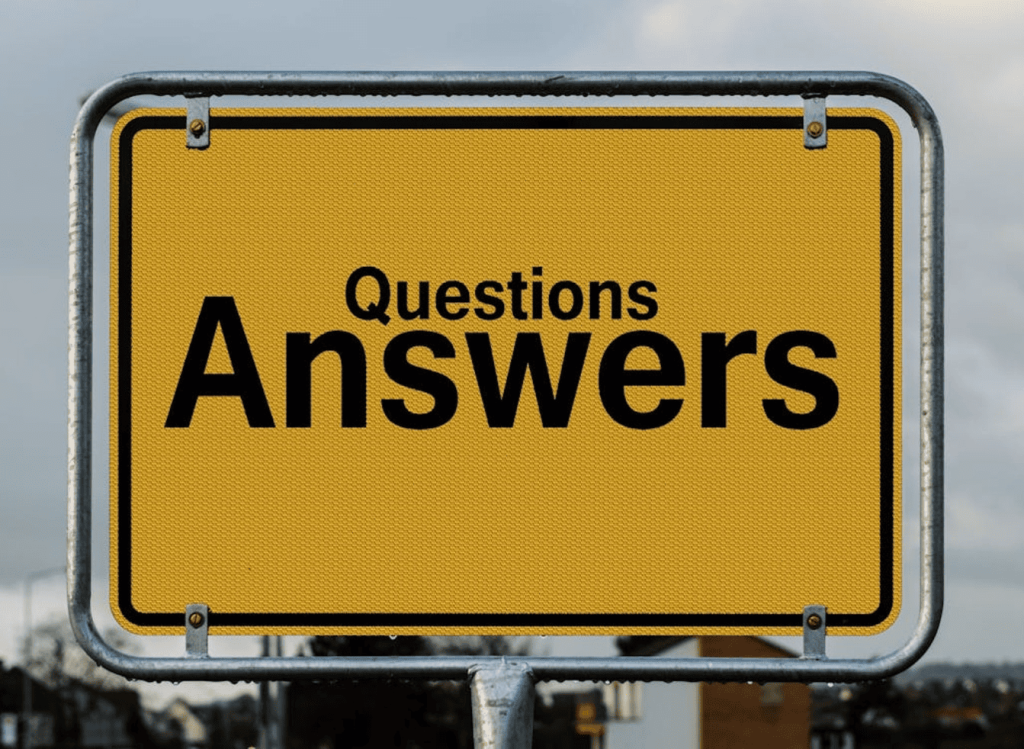Do you want to know how long is a short story? In this article, we’ll share why it’s important to write a short story to the correct length. This ensures you strike the right balance between writing flow and story quality.
Furthermore, we’ll share the best practices to stay within the required word count when writing shorter stories. You’ll see that a short story novella is different from a regular short story that requires fewer words.
Keep reading to better understand why the word count in a short story is important and for other essential points to remember when writing short stories.

Sep 19, 2024 • 12 min read
What Is a Short Story?
A short story is a brief work of fiction that focuses on a single plot, character, or theme. Unlike a novel, a short story usually has a concise narrative with a limited number of characters and settings. Also, it often revolves around a central conflict or moment. This delivers a strong emotional impact or insight in a condensed format.
Furthermore, short stories are designed to be read in one sitting. This approach makes them a powerful medium for exploring ideas, emotions, or life experiences with clarity and depth.
5 Top Features of a Short Story
There are a number of defining features of short stories that you should know about. This will help you figure out what short stories are and how they differ from other types of literature. Here are the top short story feature types:
- Length: A short story typically ranges from 1,000 to 7,500 words. This limitation requires concise storytelling by focusing on a single plot or theme. Furthermore, the limited word count encourages using fewer words. It ensures that every detail and character serves the story’s purpose.
- Focused plot: Short stories revolve around a single and well-defined plot. There’s usually one main conflict or event with minimal subplots. This focus allows for a deep exploration of the central theme or character while building tension.
- Limited characters: Short stories feature a small cast of characters, which is often just one or two central figures. This allows for more detailed characterization and avoids unnecessary complexity. Additionally, the limited number of characters ensures that the story remains focused on the core narrative and has an emotional impact on the reader.
- Single setting: The setting of a short story is often limited to one location or a few closely related places. This constraint helps to maintain narrative focus. Therefore, you can build atmosphere and invoke mood in your writing without diverting attention from the central plot or characters.
- Concise narrative: A short story delivers a clear and direct narrative. The story unfolds quickly and with minimal exposition or background details. Hence, every sentence serves the progression of the plot or the development of the theme.

How Long Is a Short Story for Different Types of Stories
Now let’s take a look at the short story word counts of different types of stories. This will help you better understand the differences between the content types. Also, you can begin thinking about how to come up with the right lengths and word counts.
Flash Fiction
Flash fiction is extremely concise, so it’s usually limited to 500 to 1,000 words. This challenges writers to convey a complete story arc within a few hundred words. Furthermore, the limited space forces the omission of anything that’s outside the core focus.
Additionally, flash fiction’s appeal lies in its ability to deliver a powerful impact in a brief reading time. It’s great for those readers who love the fast-paced nature of short story writing. Overall, the word count cap ensures that the story remains sharp and evocative.
Short-Short Story
A short-short story typically spans 1,000 to 2,500 words and offers more room than flash fiction but still requires significant limitations. This word count allows for a more developed plot and characters, yet demands limitations in language and structure.
Furthermore, writers can explore a single event or relationship in greater detail but must maintain focus to ensure the story remains tightly woven. The length is ideal for literary magazines and anthologies. It offers readers a satisfying narrative that can be consumed in one sitting without sacrificing depth or emotional impact.
Standard Short Story
Standard short stories range from 3,000 to 7,500 words. This range does a good job of providing a balance between brevity and narrative depth. In addition, this word count allows for well-developed characters, a more complex plot, and richer themes. Writers can explore multiple scenes, settings, and character arcs while maintaining a focused narrative.
You’ll also find that this range is typical for most literary magazines and competitions. That’s because it provides enough space to craft a compelling and complete story. Overall, the standard short story length is long enough to immerse readers in the fictional world while remaining accessible.
Novelette
Novelettes, also known as short stories novellas, span 7,500 to 17,500 words. The length allows for substantial character development, intricate plots, and thematic exploration. Furthermore, writers can delve into more complex storylines and subplots. It enables authors to create a richer and more immersive narrative experience.
The novelette is ideal for stories that require more space than a standard short story but are not extensive enough for a novella. This form is well-suited for science fiction and fantasy genres, where world-building often necessitates more detailed storytelling.
The Problems With Missing Short Story Word Counts
There are several problems that may arise when you fail to hit the required short story word count range. In this section, we’ll share what the issues are when you miss lengths and word counts of stories, so you can better understand what’s at stake. You’ll see that hitting the word count can be just as important as getting the story right.
Here are the problems of missing short story word counts:
- Rejection from publishers due to non-compliance: Most publishers, editors, and contests have strict word count requirements. Therefore, submitting a story that falls outside these guidelines can lead to automatic rejection, regardless of the story’s quality.
- Mismatch with audience expectations: Different word counts cater to different reader expectations. For example, flash fiction readers expect a faster story pace, while those reading a novelette expect a more detailed and immersive experience.
- Lost opportunities: Missing word count targets for a short story or collection of stories can disqualify your work from specific publication opportunities or contests. For writers aiming to build a portfolio, such missed opportunities can delay their progress.
- Perception of professionalism: Adhering to word count guidelines is part of being a professional writer. Regularly missing these targets can create a perception of inexperience or lack of professionalism. Furthermore, editors may be less inclined to work with a writer who consistently fails to meet basic submission criteria.
- Increased editing and revision burden: If a writer realizes too late that their story is over or under the desired word count, extensive editing may be required. Trimming a story to fit can lead to a loss of important details or nuances, while padding a story may require adding content that doesn’t naturally belong.
7 Best Practices for Staying Within Short Story Word Counts
Now that we’ve answered the question, “Why is the word count important in a short story” let’s turn our attention toward the best practices that you need to apply to ensure that you stay within the short story word count. These tips apply whether you’re writing stories, novellas, and novelettes, or a short story collection.
1. Outline Your Story Before Writing
Starting with an outline helps you stay focused on key plot points, characters, and themes. Therefore, you’ll have an easier time avoiding unnecessary tangents. You can begin by identifying the essential elements, such as the beginning, middle, and end.
Additionally, by knowing what needs to be included, you can avoid extraneous details. This ensures that every word serves the story’s purpose. The strong sense of structure keeps you within your word limit and maintains the story’s clarity and impact.
2. Focus on a Single Conflict or Theme
Short stories thrive on getting to the point so narrowing down to a single conflict, theme, or event is crucial. Avoid the temptation to explore multiple subplots or complex themes that would require more space to develop properly.
Additionally, consider concentrating on one central idea or conflict. You can dive deeper and give it the attention it deserves without spreading your word count too thin. This approach ensures that your story remains cohesive and compelling, with every element contributing to the main narrative arc.
3. Use Concise and Precise Language
Every word counts in a short story, so it’s essential to make your language as concise and precise as possible. Therefore, avoid lengthy descriptions, verbose dialogue, or unnecessary exposition. Instead, choose words that pack a punch, conveying much in little space.
Furthermore, strong verbs, specific nouns, and vivid imagery can replace longer explanations. This practice helps you stay within the word count and also makes your writing more engaging.
4. Limit the Number and Characters and Settings
Introducing too many characters or settings can quickly inflate your word count and dilute the story’s focus. Hence, stick to one or two primary characters and a limited number of settings that are crucial to the plot. Each character and setting should have a clear purpose. This means they need to contribute directly to the story’s main conflict or theme.
Furthermore, by limiting these elements you create a more intimate and controlled narrative that’s easier to manage within a short word count. It can take a bit of practice to get this right, which is especially true if you typically write longer stories. However, with some skillful editing methods, you can achieve the right short story lengths.
5. Trim Unnecessary Scenes and Dialogue
After completing your draft, review each scene and dialogue exchange critically. Ask yourself if they are essential to the story’s progression. If a scene doesn’t advance the plot, reveal important character traits, or enhance the theme, then consider cutting or condensing it.
Overall, dialogue should be sharp and serve to reveal characters or drive the plot forward. Hence, avoid small talk or exchanges that don’t add value. This ruthless editing ensures that only the most vital elements remain, keeping your story tight, engaging, and within the word limit.
6. Edit Ruthlessly After Writing
Once your draft is complete, go back and edit with a critical eye. Make sure to focus on eliminating redundancy, tightening sentences, and removing anything that doesn’t directly contribute to the plot. Furthermore, it is important to look for opportunities to combine scenes or convey the same information more efficiently.
This process might involve cutting entire paragraphs or reworking sections to be more concise. Ruthless editing is key to staying within your word count while ensuring that your story remains engaging. As you write more story novella or novelette editions, you’ll get better at the process.
7. Set a Word Count Target for Each Section
To manage your word count effectively, set specific word counts for short stories in each section. The sections can include the introduction, middle, and conclusion. This strategy helps you allocate your word count wisely and ensures that no part of the story is overly long or underdeveloped.
Furthermore, by adhering to these targets during the writing process, you can better control the story’s pacing and flow. Overall, it makes it easier to stay within the overall word limit. The structured approach also highlights areas that need trimming or expansion during revisions.
Benefits of AI Tools for Sticking to Short Story Word Counts
You can stick to short story word counts with the help of AI tools. It’s far easier to meet specific word counts with the help of tools, as you’ll see in the following section:
- Precision editing: AI tools can analyze your short story’s content and suggest precise cuts or additions. This helps you stay within the desired word count without having to struggle. They can identify redundant phrases, unnecessary descriptions, and filler words. For example, Smodin AI’s Rewriter tool can get the job done to your specifications.
- Enhanced story structure: You can use AI tools to structure the content correctly and help you focus on key narrative elements. They highlight plot inconsistencies or unnecessary subplots that may inflate word count. Furthermore, by streamlining the structure, these tools ensure that your short story maintains a coherent and engaging flow.
- Optimized dialogue: AI-based tools can refine dialogue by identifying overly long exchanges or unnecessary dialogue tags, which often contribute to bloated word counts. Additionally, they can suggest concise alternatives that preserve character voice and meaning.
- Vocabulary efficiency: Take advantage of AI tools to get more concise word choices and rephrase sentences for shortness without compromising meaning. Also, they can enhance vocabulary efficiency and fix common writing mistakes.
- Real-time word count tracking: AI tools offer real-time word count tracking, thereby allowing you to monitor your progress as you write or edit. This feature helps you stay aware of your word count. Also, instant feedback on word count enables more controlled writing and reduces the need for extensive editing later.

Write Your Short Story Easily With Smodin AI
Now that you understand the word count limits of your short story, you can begin crafting the outline. It’s important to understand the word limits so that you don’t receive penalties such as getting the work rejected or lower grades.
When learning how long is a short story, take the time to follow the best practices. This ensures that you’re able to stick to the word count limit without sacrificing the quality of the end result. You’ll see that it’s possible to craft amazing stories with a short format.
Do you need help sticking within the word limit of your short story? Then consider writing it with the help of Smodin AI. We offer an intuitive AI-based tool that will help create a short story of any length. You’ll see by example that it’s possible to write a story while adhering to word count requirements.
So what are you waiting for? Give Smodin AI a try today, and don’t look back.
FAQs
How does short story length vary by genre?
The word count of a short story can vary depending on the genre. For instance, science fiction and fantasy short stories often allow for longer lengths due to world-building. They can sometimes reach 10,000 words.
In comparison, literary fiction tends to stick closer to the standard 3,000 to 5,000-word range. However, the focus remains on delivering a complete story, regardless of the genre’s typical word count.
What is considered the minimum word count for a short story?
A short story typically requires at least 1,000 words. Anything shorter is often categorized as flash fiction. This lower limit ensures that the story has enough space to develop characters, plot, and theme.
However, in practice, the minimum word length may depend on the educational establishment or employer that requires the short story. Therefore, you need to ask about the details of the assignment to figure out the exact minimum word count.
Why are short stories usually between 1,000 and 7,500 words?
Short stories are usually between 1,000 and 7,500 words because this range provides enough space for a complete narrative arc while maintaining focus. It allows the writer to focus on a singular plot, theme, or character study.
This makes it an ideal length for readers seeking a quick and satisfying experience that still delivers depth.
Are there exceptions to the typical short story word count?
Yes, exceptions exist for short story word counts. Some publications or competitions accept stories as short as 500 words or as long as 10,000 words. Literary traditions, like those in folklore or ancient fables, often include very brief stories.
Additionally, experimental writers sometimes challenge conventional limits by crafting ultra-short or extended pieces that still function as short stories. This blurs the lines between flash fiction and novellas.
What’s the difference between a short story and a novella?
The primary difference between a short story and a novella is word count and narrative complexity. While a short story ranges from 1,000 to 7,500 words, a novella typically spans 20,000 to 50,000 words.
Also, novellas offer more space for character development and plot intricacies but remain shorter than full-length novels. Short stories are more concise by focusing on a singular theme or moment.






 AI
Plagiarism Checker
AI
Plagiarism Checker
 AI
Content Detection Remover
AI
Content Detection Remover
